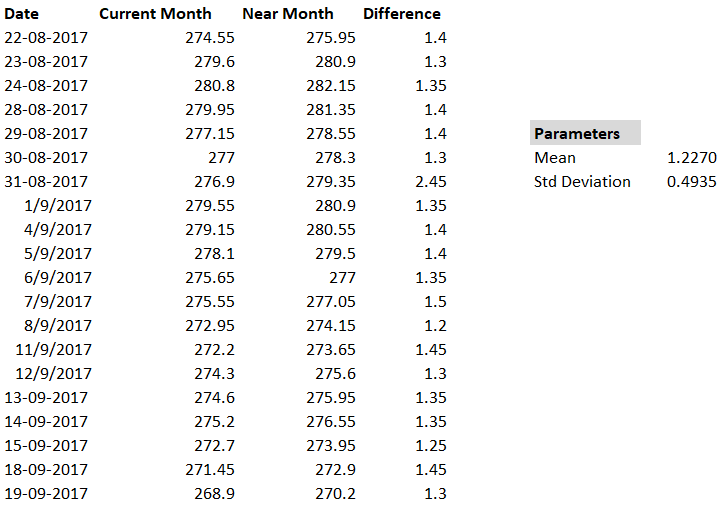
If you invest in the stock of this company, you could lose everything or make a fortune. In contrast, a blue chip company is less likely to go bankrupt, but you’re also less likely to get rich by buying stock in a company with millions of shareholders. Understanding the relationship between risk and return is essential to understanding why people make some of the investment decisions they do. Complications in calculating ROI can arise when real property is refinanced, or a second mortgage is taken out. Interest on a second, or refinanced, loan may increase, and loan fees may be charged, both of which can reduce the ROI, when the new numbers are used in the ROI equation.
Or, if you’re taking the risk of building your own business, you might be more comfortable making investments that you know you can count on. This holds true if either the time-weighted method is used, or there are no flows in or out over the period. If using one of the money-weighted methods, and there are flows, it is necessary to recalculate the return in the second currency using one of the methods for compensating for flows. For example, if an investor puts $1,000 in a 1-year certificate of deposit (CD) that pays an annual interest rate of 4%, paid quarterly, the CD would earn 1% interest per quarter on the account balance.
Where the individual sub-periods are each equal (say, 1 year), and there is reinvestment of returns, the annualized cumulative return is the geometric average rate of return. Return on equity (ROE) is a profitability ratio calculated as net income divided by average shareholder’s equity that measures how much net income is generated per dollar of stock investment. If a company makes $10,000 in net income for the year and the average equity capital of the company over the same time period is $100,000, then the ROE is 10%.
- Examples of such factors are raw material scarcity, labour strike, management inefficiency, etc.
- To measure returns net of fees, allow the value of the portfolio to be reduced by the amount of the fees.
- We can also define it as the net amount of discounted cash flows obtained on an investment.
- You could calculate rate of return by expressing the economic gain, i.e., profit, as a percentage of the capital used to produce that gain.
- That’s because you have the time to wait for a rebound when there is a downturn in the market.
The outcomes or the benefits that the investment generates are called returns. Wealth maximization approach is based on the concept of future value of expected cash flows from a prospective project. Investing in a variety of different securities can help diversify a portfolio and potentially achieve a higher return without adding much additional risk. By spreading out investments across different sectors and asset classes that are not highly correlated, investors can minimize the risk of any single security negatively impacting returns.
(ii) Unsystematic Risk
Or, if you buy stock for $10,000 and sell it for $9,500, your return is a $500 loss. Of course, you don’t have to sell to figure return on the investments in your portfolio. You simply subtract what you paid from their current value to get a sense of where you stand. Ordinary returns and logarithmic returns are only equal when they are zero, but they are approximately equal when they are small. The difference between them is large only when percent changes are high. For example, an arithmetic return of +50% is equivalent to a logarithmic return of 40.55%, while an arithmetic return of −50% is equivalent to a logarithmic return of −69.31%.
The rate of return, ROR, or return, in the world of investments is the profit or loss you make on an investment. Real rates of return better reflect the purchasing power of investment returns. You can manage nonsystemic risk by allocating and diversifying your portfolio, or spreading your assets among a variety of investments. That way, if one of your investments goes down significantly in value, those losses may be offset to some degree by gains, or even stable values, in some of your other investments. You also have to correct for income taxes on realized gains and investment income. That’s the reason that tax-deferred and tax-free accounts are such attractive ways to invest.
Is it possible to have a negative return?
The return of the risky and
riskless assets is only having the possibilities to bring down the risk of the
portfolio. It is
risk – variability in a security’s return resulting from the changes in the
level of interest rates. What if you sold the bond for $2,200 and earned $300 in total interest? Your rate of return would be the $200 gain plus $300 interest income.
McClanahan “Highly Unlikely” To Return This Season, Worsening … – Fangraphs
McClanahan “Highly Unlikely” To Return This Season, Worsening ….
Posted: Wed, 09 Aug 2023 15:07:07 GMT [source]
This method is called the time-weighted method, or geometric linking, or compounding together the holding period returns in the two successive subperiods. The overall period may, however, instead be divided into contiguous subperiods. This means that there is more than one time period, each sub-period beginning at the point in time where the previous one ended. In such a case, where there are multiple contiguous subperiods, the return or the holding period return over the overall period can be calculated by combining together the returns within each of the subperiods. The annual rate of return is the percentage change in the value
of an investment. V Correlation
of the expected returns of the constituent securities in the portfolio.
Return on Investment (ROI)
There may also be an increase in maintenance costs and property taxes, and an increase in utility rates if the owner of a residential rental or commercial property pays these expenses. To the right is an example of a stock investment of one share purchased at the beginning of the year for $100. The answer is that there is insufficient data to compute a return, in any currency, without knowing the return for both periods in the same currency. To measure returns net of fees, allow the value of the portfolio to be reduced by the amount of the fees.
- For instance, a bond with a face value of $1,000 and an annual coupon (interest payment) of $50 would have a yield of 5%.
- The appropriate method of annualization depends on whether returns are reinvested or not.
- In other words, the investors are saying more or less that the fund returns may not be what their actual account returns are, based upon the actual investment account transaction history.
For example, investments in company stock shares put capital at risk. If the price is relatively stable, the stock is said to have “low volatility”. If the price often changes a great deal, the stock has “high volatility”. It is a measure of investment performance, as opposed to size (c.f. return on equity, return on assets, return on capital employed). Any type of investment vehicle, including stocks, fine art, bonds, exchange-traded funds (EFTs), or real estate can yield a rate of return. It yields the return as long as that asset is bought at one point in time and produces cash flow at a future point in time.
Elements of Risk
If you want the financial security and sense of accomplishment that comes with investing successfully, you have to be willing to take some risk. In most cases, risk means the possibility you’ll lose some or even all of the money you invest. For example, a startup business could become bankrupt, or it could become a multimillion-dollar company.

It is not meaningful to compound together returns for consecutive periods measured in different currencies. Before compounding together returns over consecutive periods, recalculate or adjust the returns using a single currency of measurement. In order to translate average returns into overall returns, compound the average returns over the number of periods. For a return of +20%, followed by −20%, this again has an average return of 0%, but an overall return of −4%. V Risk is
studied through the correlation/co-variance of the constituting assets of the
portfolio. The Correlation among the securities should be relatively considered
to maximize the return at the given level of risk or to minimize the risk.
MeSH terms
To level the playing field and help investors compare performance returns of one fund to another, the U.S. Funds may compute and advertise returns on other bases (so-called “non-standardized” returns), so long as they also publish no less prominently the “standardized” return data. Return on assets (ROA) is a profitability ratio calculated as net income divided by average total assets that measures how much net profit is generated for each dollar invested in assets. It determines financial leverage and whether enough is earned from asset use to cover the cost of capital.

As an investor, typically, you need to take on more investment risk in order to realize higher investment returns. While this is not always the case, in general, investors should expect this relationship to hold. If an investor concept of return is unwilling to take on investment risk, they should not expect returns above the risk-free rate of return. The return on your investment portfolio helps you evaluate the progress you’re making toward your financial goals.
What are gross return and net return?
That is, they had little idea how significant the difference could be between “gross” returns (returns before federal taxes) and “net” returns (after-tax returns). These after-tax returns would apply of course only to taxable accounts and not to tax-deferred or retirement accounts such as IRAs. Return is the gain or loss that an investment generates over a period of time. A positive return indicates a profit, while a negative return indicates a loss. The return on an investment is usually quoted as a percentage and includes any income that the investment generates (e.g., interest, dividends) as well as capital gains (price increases).
V Including
the various types of industry securities – Diversification of assets. V Benefits
of portfolio holdings are bearing certain benefits to single assets. My Accounting Course is a world-class educational resource developed by experts to simplify accounting, finance, & investment analysis topics, so students and professionals can learn and propel their careers. However, depending on the context, they can also take on different meanings. Adam Hayes, Ph.D., CFA, is a financial writer with 15+ years Wall Street experience as a derivatives trader. Besides his extensive derivative trading expertise, Adam is an expert in economics and behavioral finance.
